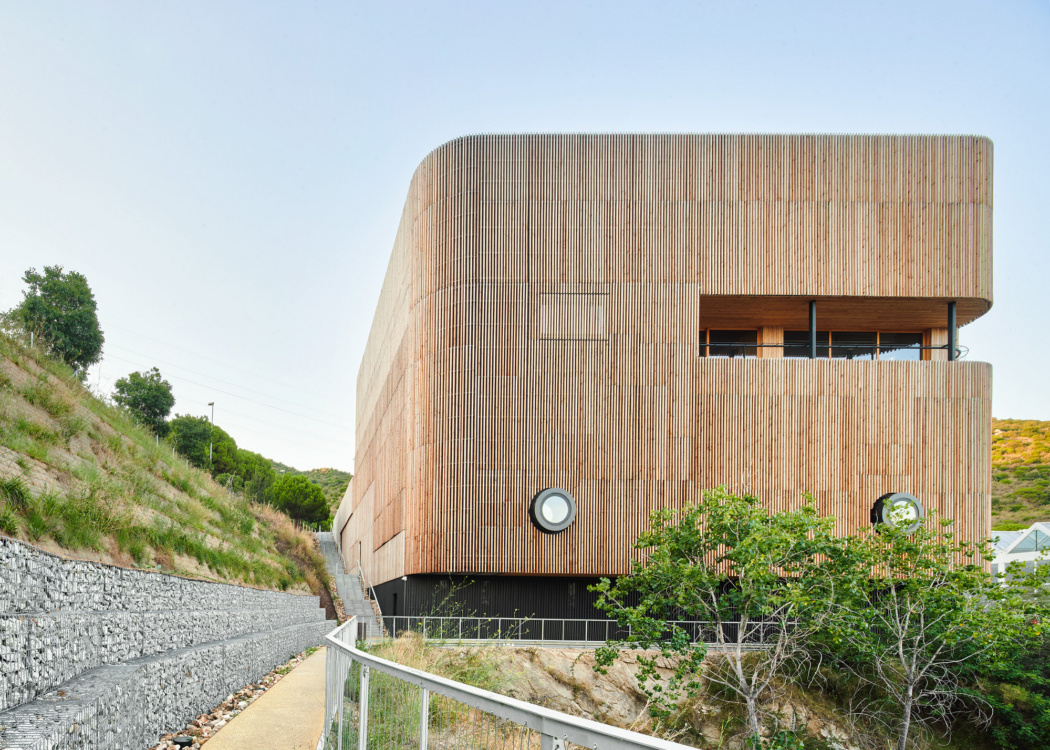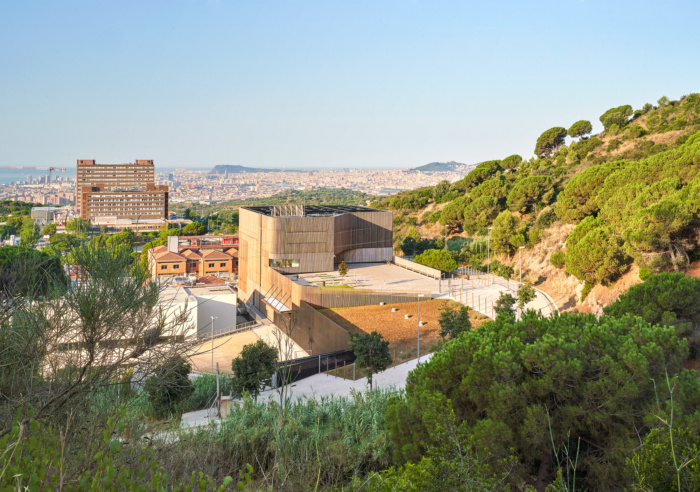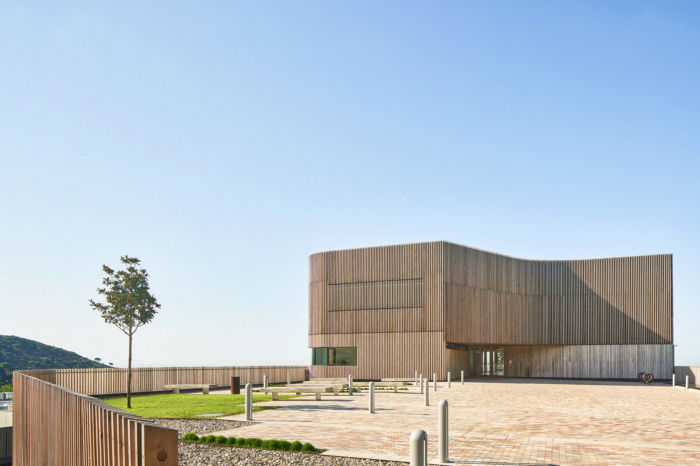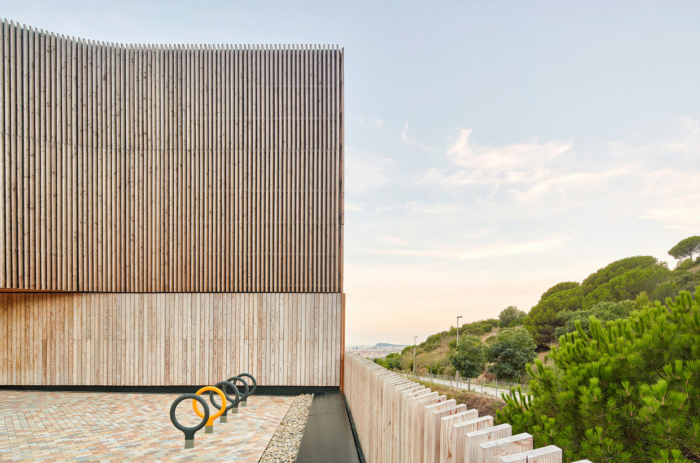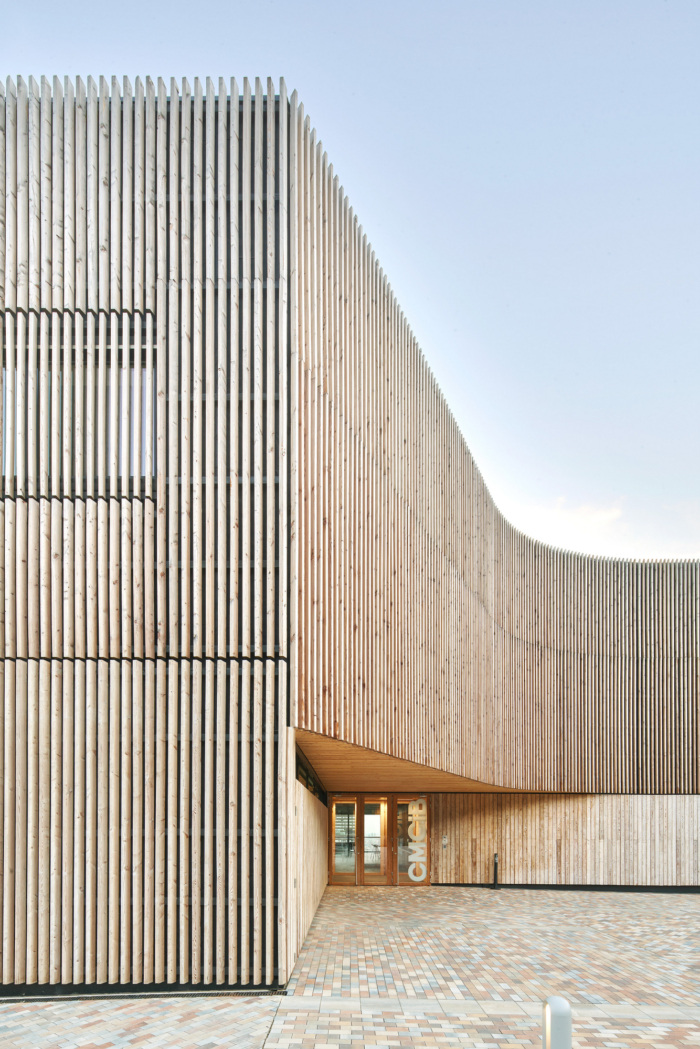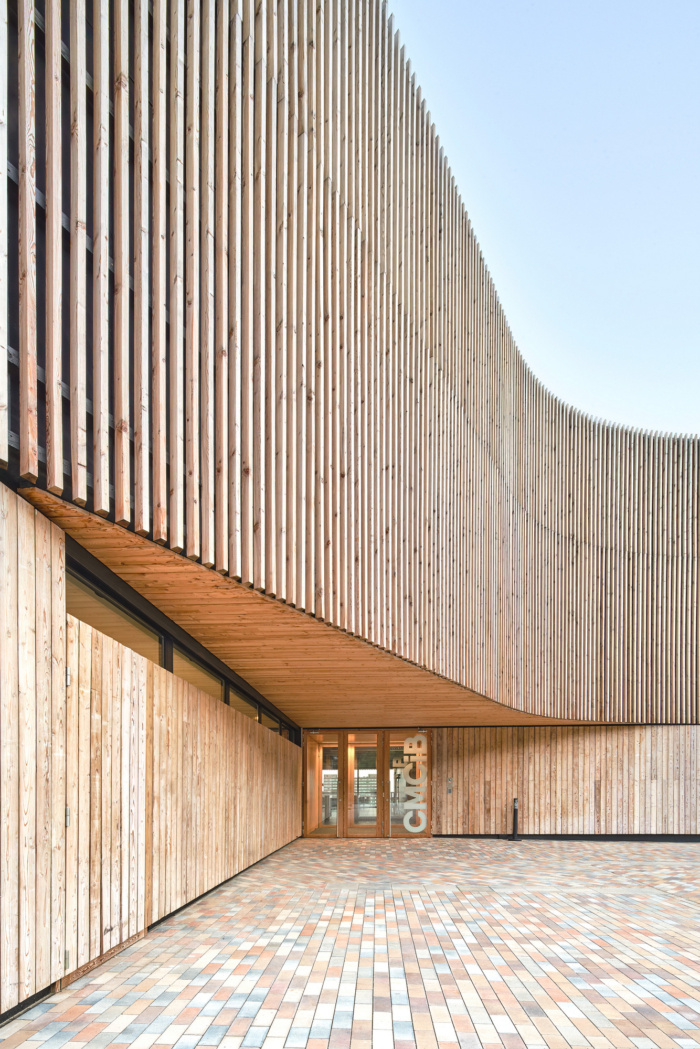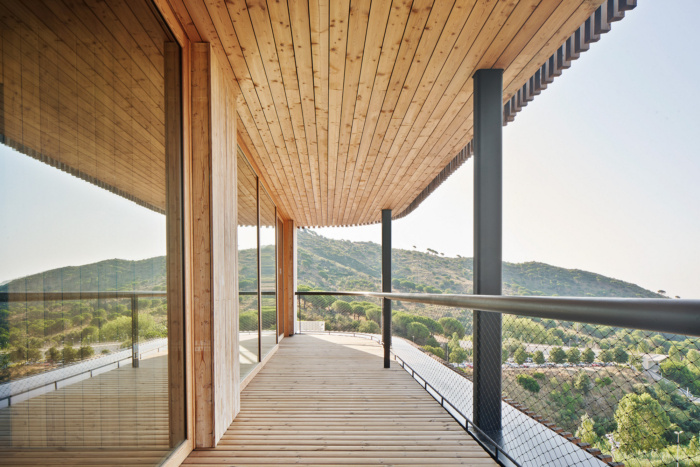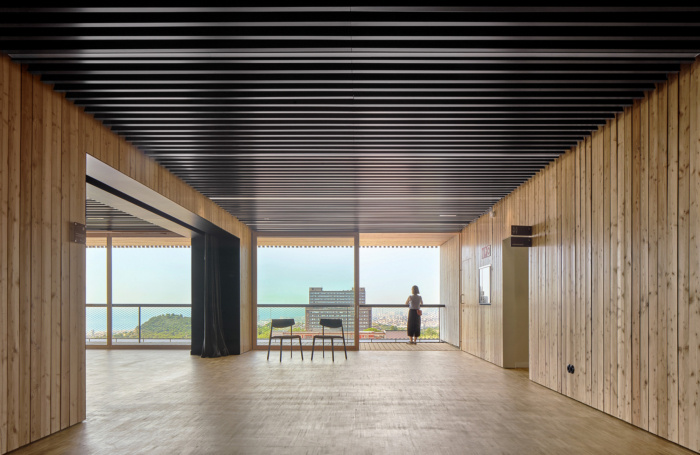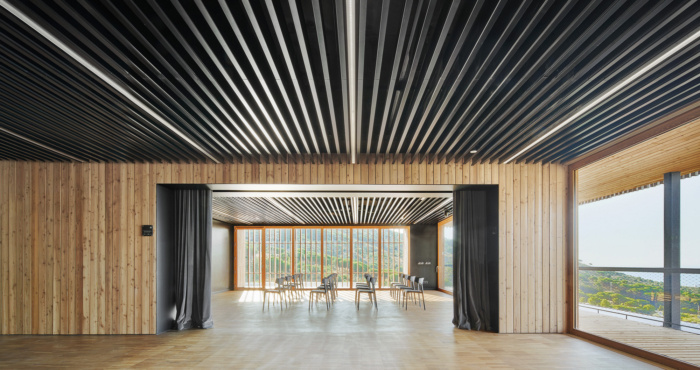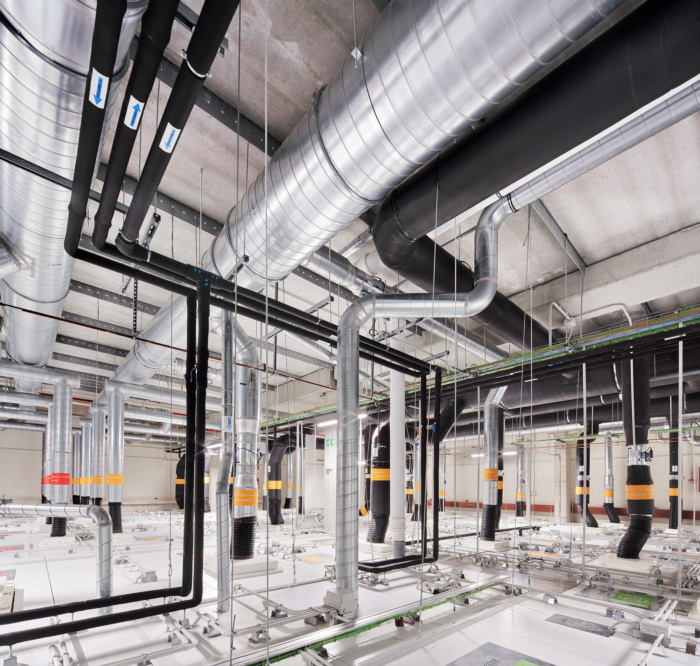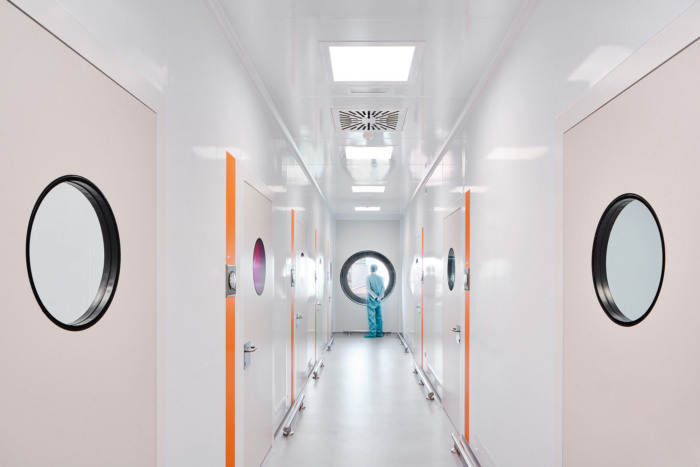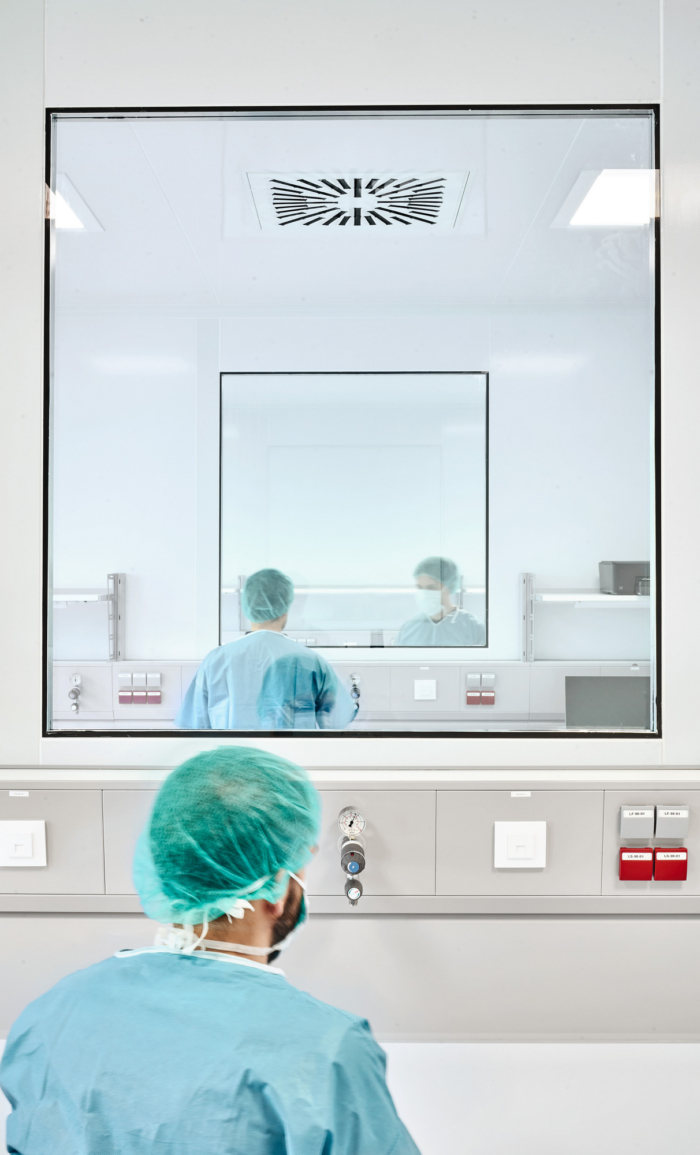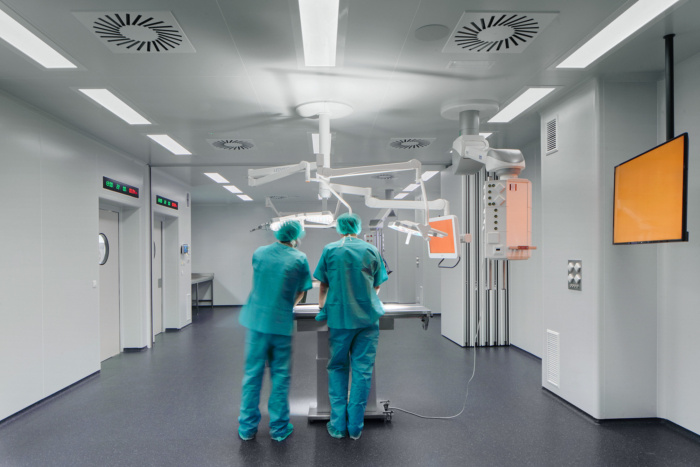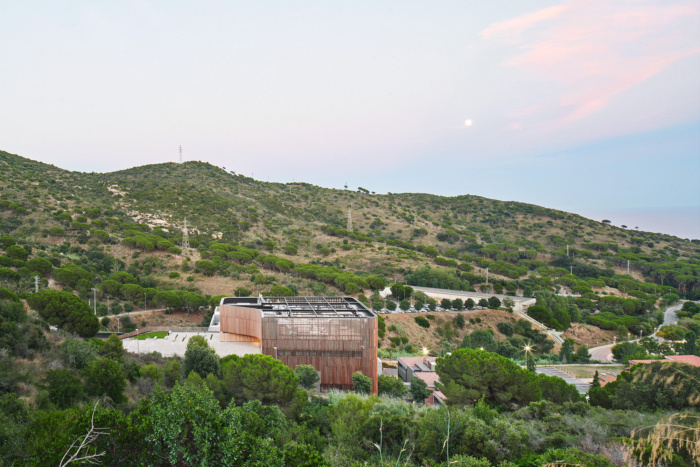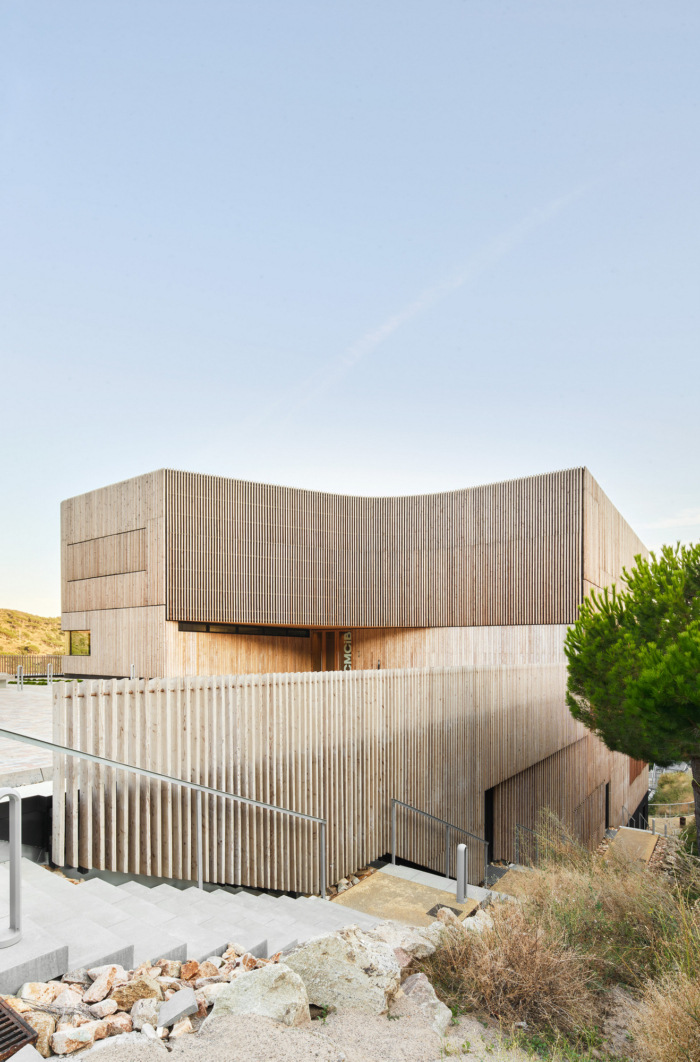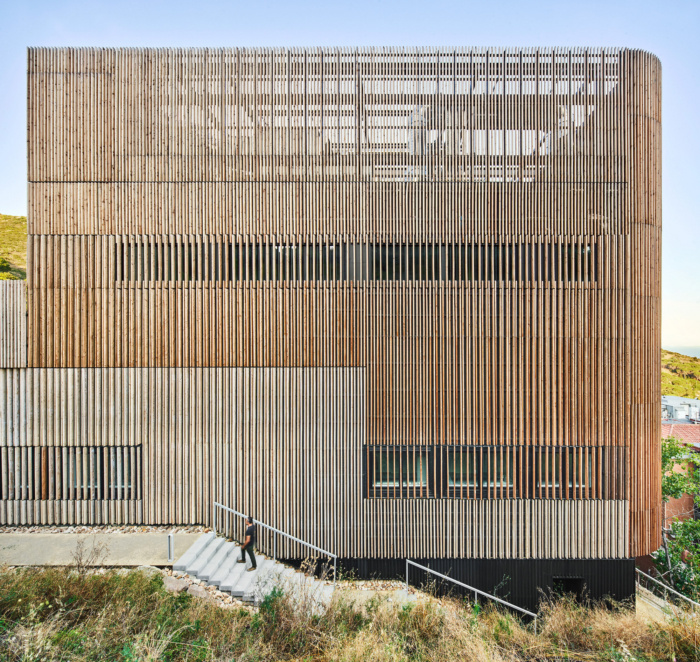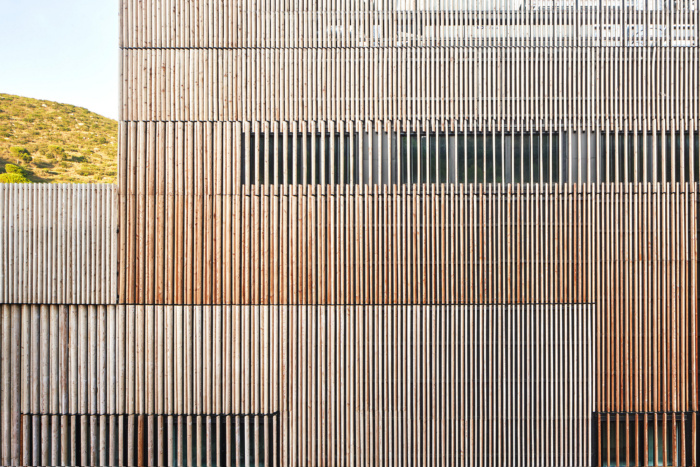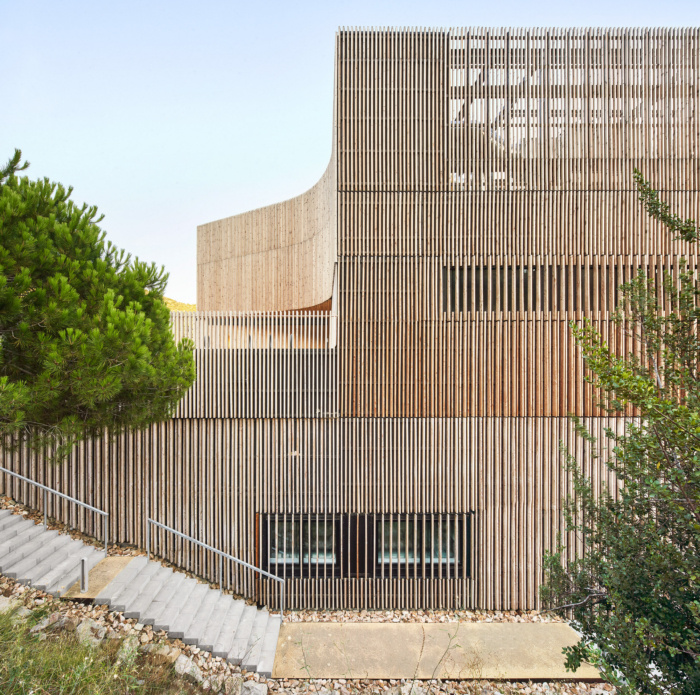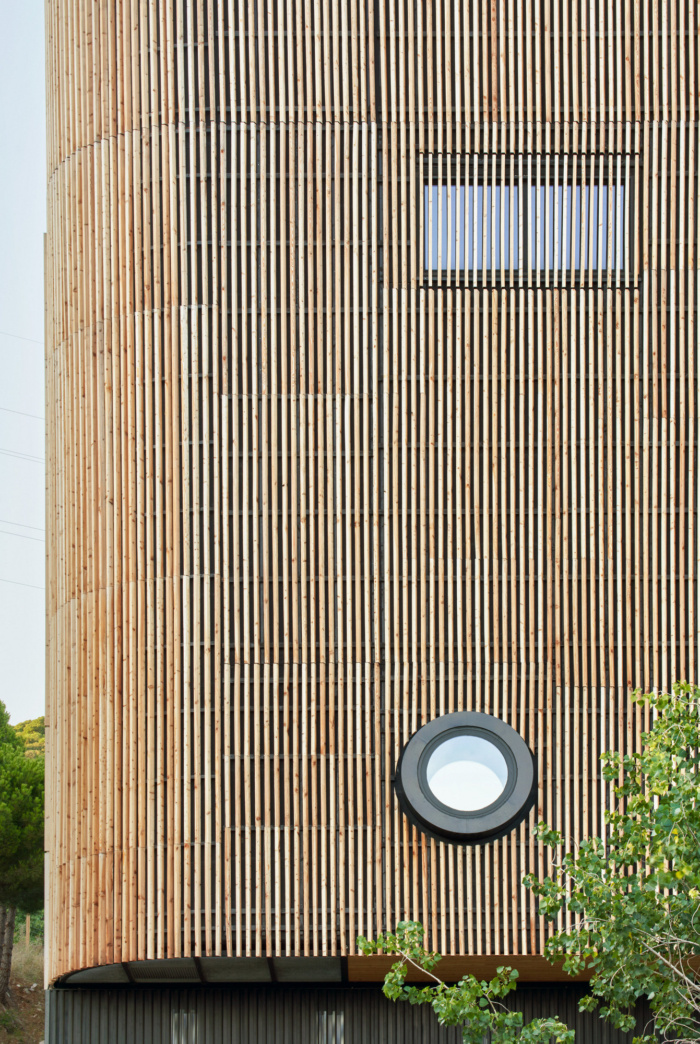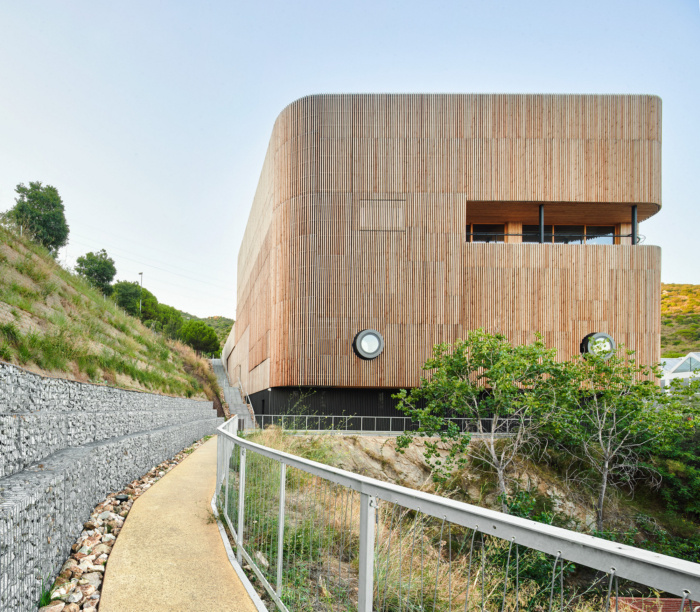Centre for Comparative Medicine and Bio-Image
Calderon‐Folch Studio, Sarsanedas Arquitectura and COMA Arquitectura collaborated on the Centre for Comparative Medicine and Bio-Image in Barcelona, Spain.
The new Centre for Comparative Medicine and Bio-Image of Catalonia (CMCiB) is a building that houses a front-line research centre. It is a leading facility based on ethical research criteria, whose technical and functional complexity and comfort features have been effectively, sustainably, and sensitively resolved with the environment.
Research and Teaching: The CMCiB is part of the Can Ruti Campus as a scientific-technical hub of the Institute for Health Science Research Germans Trias i Pujol (IGTP); an Institute dedicated to research and training within the field of biomedicine. The University Hospital Germans Trias i Pujol is located in the centre of the Campus, surrounded by several health research centres such as the IGTP itself, the Josep Carreras Leukemia Research Institute or the IrsiCaixa AIDS Research Institute, as well as the UAB Faculty of Medicine and the Guttmann Institute.
Integration with the Environment: The integration with the environment is addressed by implementing volume in the topography, defining an organic geometry and its materiality, as well as naturalising outdoor spaces. The building is located on a large uneven site that borders the forest area at the highest point of the University Campus. The height difference is used to generate a topographic building that merges the different levels, articulating the program inside and generating the minimum visible volume. Thus, the research floor levels, which require stable climatic conditions, remain semi-buried, hidden and sheltered under a surface of green roofs linked to the site. The visible volume, compacted and of rounded edges, seeks to achieve the relationship with the environment through a curvy concavity that embraces the access plaza and a bio-spherical timber building envelope that merges with the natural environment of the Serralada de Marina Park.
Functionality: The complex functional program and technical requirements are addressed by generating two access floor levels – which separate the entry of people from the logistics area – giving rise to two functional areas: The Administrative and Scientific-Technical Areas. In addition, this stratification of uses by levels allows the scientific activities to be separated from the maintenance ones guaranteeing the optimal functioning of the centre and the strict requirements of biological containment. In this way, a technical floor level is built on the entire surface of the Scientific-Technical Area that allows access to all facilities without interfering with the development of the scientific-teaching activity.
Comfort: One of the most important challenges in the pursuit of excellence in scientific research is to consolidate local talent and attract international talent. Thus, a building with the highest comfort features (visual, hydrothermal, and acoustic) is designed, in a privileged, bright environment, with large spaces and natural materials that guarantee adequate working conditions. Bioconstruction: To minimize CO2 emissions during the construction of the building, low carbon footprint materials have been chosen. The building envelope has been built using a modular system made up of a light timber lattice, loose-fill cellulose, structural insulated timber panels and untreated larch cladding above 3.5m and ignited at its base. Prefabrication is chosen – also for the load-bearing structure – to ensure a higher overall quality, a minimal material waste and to speed up the construction process as much as possible.
Energy Efficiency: A compact design that reduces the amount of surface exposed to solar radiation, with facades and roof systems of high thermal performance, equipped with air-conditioning systems with energy recovery and variable air flow (whose operating regime adapts to real demands, by NH3 and CO2 probes), pumps, highly efficient motors and secondary circuits, efficient and adjustable artificial lighting systems, etc. A 250m² tank to manage and recycle rainwater for sanitary and irrigation purposes, together with the implementation of sanitary equipment and efficient systems also represent a significant reduction in water demand for a leading facility.
Design: Calderon‐Folch Studio, Sarsanedas Arquitectura and COMA Arquitectura
Photography: José Hevia

